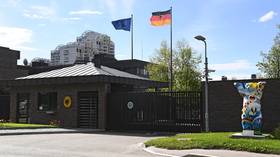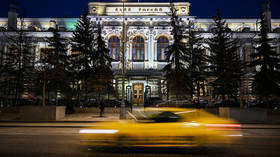Indians suffer from rising food prices
Soaring food prices in India are leaving the most vulnerable at risk. For many, rice and vegetables are the only foods they can afford.
Baiju is a taxi driver and earns $40 a month – not much in the best of times, but with food prices up a record 20 percent compared to last year, his wife has no choice but to cut down on essentials.
“Lentil cost almost $1.5 a kilo, so do you think we can eat it? The price used to be 60 cents – we could buy it then, now we can’t even think of it,” said housewife Guriya Devi. “What can we do with the income we have? Poor people like us are suffering.”
“The price of lentil and rice has gone up so much that we’ve stopped eating lentil,” Baiju said. “Even potatoes have become expensive… Our family survives by eating just vegetables and rice.”
India is the world's second largest producer of both wheat and rice. But a heavy monsoon last year led to a poor crop yield, food shortages and, in turn, price rises.
In an attempt to keep inflation under control, in the last few years the government has banned all exports of rice except high-priced basmati.
“The idea is that anything that is high-priced, let it go out, and let the farmers also get the benefit,” Nanda Kumar, Secretary of the Department of Agriculture and Cooperation, told RT. “But the low-priced rice we would like to keep here for the poorer people.”
It's a theory that many struggling with the price rises would argue clearly isn't working. 21-year old Manish Kumar found his monthly food bill has doubled in the past 2 months alone.
“Yes, prices have gone up a lot,” he said. “Earlier I spent $20 dollars a month on my meals, now I have to spend a minimum of $40 on food. To get a decent meal, you have to spend money. Anything less, and you can’t survive.”
A long-term worry for India’s poor is the increasing trend elsewhere in the world of taking wheat and sugarcane out of the food chain, and into bio-fuel production. One third of the entire wheat harvest in the US already goes into manufacturing ethanol.
The West often claims that increasing prosperity in countries like India and China is driving demand for food, and pushing prices up worldwide. Yet per capita foodgrain consumption in the US remains five times that of India, and is even twice that of the European Union. In fact, it is America’s increasing use of foodgrain for making bio-fuel which is now hitting the poor on the other side of the planet.













